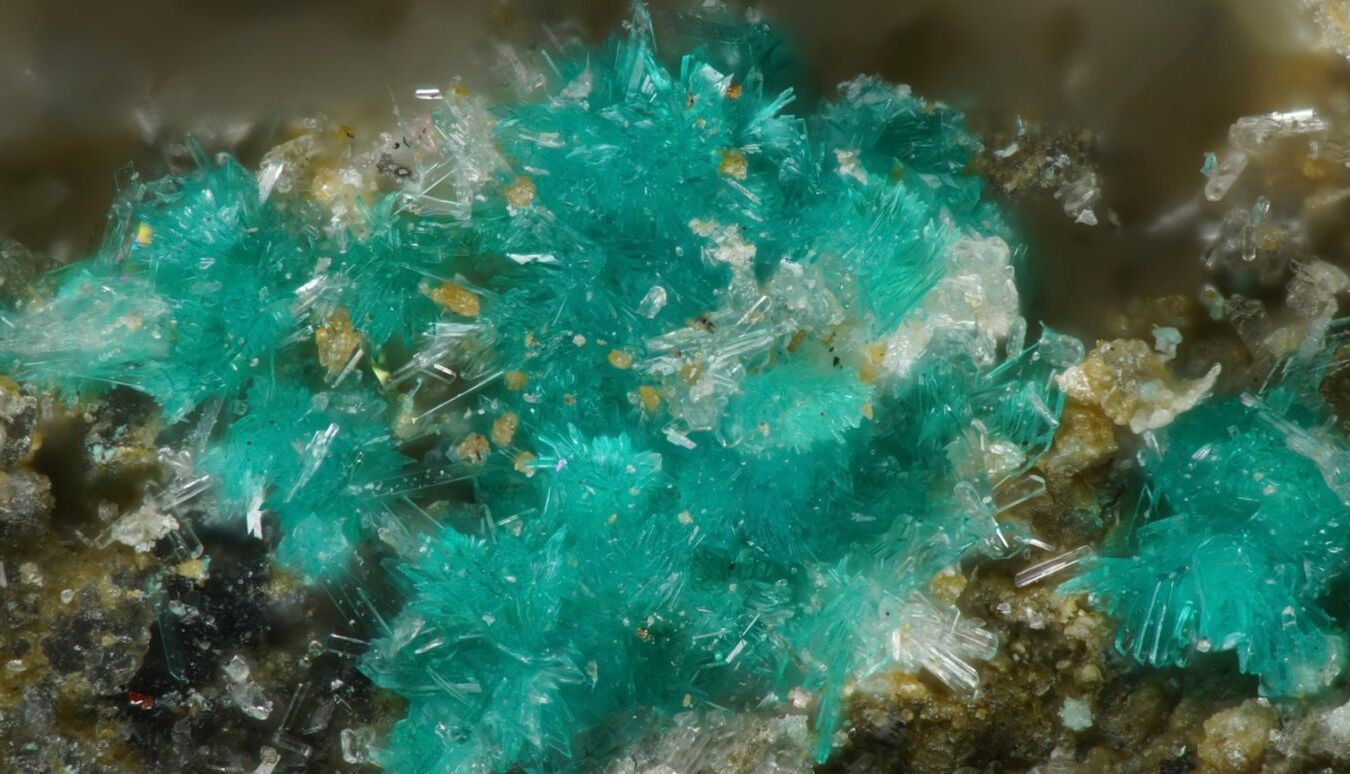
Niedermayrite is a rare mineral that captures the interest of geologists and collectors alike. Found in specific locations around the world, this mineral boasts a unique chemical composition and striking appearance. But what makes Niedermayrite so special? Its vibrant green color, coupled with its rarity, makes it a sought-after specimen. This mineral forms in oxidized zones of copper deposits, often alongside other rare minerals. Want to know more? Here are 30 fascinating facts about Niedermayrite that will deepen your appreciation for this geological gem. From its discovery to its unique properties, let's dive into the world of Niedermayrite!
Key Takeaways:
- Niedermayrite is a rare mineral with a unique structure and color, found in specific locations around the world. Its discovery has added to the diversity of known sulfate minerals, making it a valuable addition to any mineral collection.
- Niedermayrite's physical and chemical properties make it a subject of academic research and a valuable tool for understanding oxidation processes in mineral deposits. Its rarity and fascinating history make it a prized collector's mineral.
What is Niedermayrite?
Niedermayrite is a rare mineral that catches the eye with its unique properties and fascinating history. Named after the Austrian mineralogist Gerhard Niedermayr, this mineral has a lot to offer for those interested in geology and mineralogy.
- Niedermayrite is a copper zinc sulfate mineral.
- It was first discovered in 1981.
- The mineral is named after Gerhard Niedermayr, an Austrian mineralogist.
- Niedermayrite has a triclinic crystal system.
- Its chemical formula is Cu4Zn(SO4)2(OH)6·4H2O.
Physical Properties of Niedermayrite
Understanding the physical properties of Niedermayrite can help identify it in the field. These characteristics make it stand out among other minerals.
- Niedermayrite typically forms needle-like crystals.
- The crystals are often transparent to translucent.
- It has a vitreous to silky luster.
- The mineral's color ranges from blue to green.
- Niedermayrite has a hardness of 2.5 on the Mohs scale.
Where is Niedermayrite Found?
Niedermayrite is not a common mineral, and its occurrences are limited to specific locations around the world. Knowing where to find it can be exciting for mineral collectors.
- The first discovery of Niedermayrite was in Cap Garonne Mine, France.
- It has also been found in Tsumeb, Namibia.
- Niedermayrite occurrences have been reported in Arizona, USA.
- The mineral is often found in oxidized zones of copper deposits.
- Niedermayrite is usually associated with other minerals like brochantite and langite.
Chemical Composition and Structure
The chemical makeup and structure of Niedermayrite contribute to its unique properties. These details are crucial for understanding its formation and behavior.
- Niedermayrite contains copper, zinc, sulfur, oxygen, and hydrogen.
- The mineral's structure includes hydroxyl groups and water molecules.
- It forms through the oxidation of primary copper and zinc minerals.
- The presence of zinc distinguishes it from similar minerals.
- Niedermayrite's complex structure makes it a subject of study for mineralogists.
Uses and Significance
While Niedermayrite may not have widespread industrial uses, its significance lies in its rarity and the information it provides to scientists.
- Niedermayrite is primarily a collector's mineral.
- It helps researchers understand oxidation processes in mineral deposits.
- The mineral's unique properties make it a subject of academic research.
- Niedermayrite can be used in educational displays to teach about mineralogy.
- Its rarity makes it a valuable addition to any mineral collection.
Interesting Facts About Niedermayrite
Beyond its scientific and physical properties, Niedermayrite has some intriguing aspects that make it even more fascinating.
- Niedermayrite crystals can form radiating clusters.
- The mineral can sometimes be found in microcrystalline aggregates.
- Niedermayrite's name honors a living person, which is relatively rare in mineral naming.
- It is often found in small quantities, making large specimens highly prized.
- Niedermayrite's discovery added to the diversity of known sulfate minerals.
Niedermayrite: A Hidden Gem in Mineralogy
Niedermayrite, with its striking blue-green hue, is more than just a pretty face. This rare mineral, found in only a handful of locations worldwide, offers unique insights into the geological processes that shape our planet. Its chemical composition, primarily copper and zinc sulfate, makes it a subject of interest for both scientists and collectors. Despite its rarity, niedermayrite's distinct crystal structure and vibrant color make it a standout in any mineral collection.
Understanding niedermayrite helps us appreciate the complexity and beauty of Earth's natural formations. Whether you're a seasoned geologist or a curious enthusiast, this mineral offers a fascinating glimpse into the world of mineralogy. So next time you come across a piece of niedermayrite, take a moment to marvel at its unique characteristics and the stories it tells about our planet's history.
Frequently Asked Questions
Was this page helpful?
Our commitment to delivering trustworthy and engaging content is at the heart of what we do. Each fact on our site is contributed by real users like you, bringing a wealth of diverse insights and information. To ensure the highest standards of accuracy and reliability, our dedicated editors meticulously review each submission. This process guarantees that the facts we share are not only fascinating but also credible. Trust in our commitment to quality and authenticity as you explore and learn with us.
